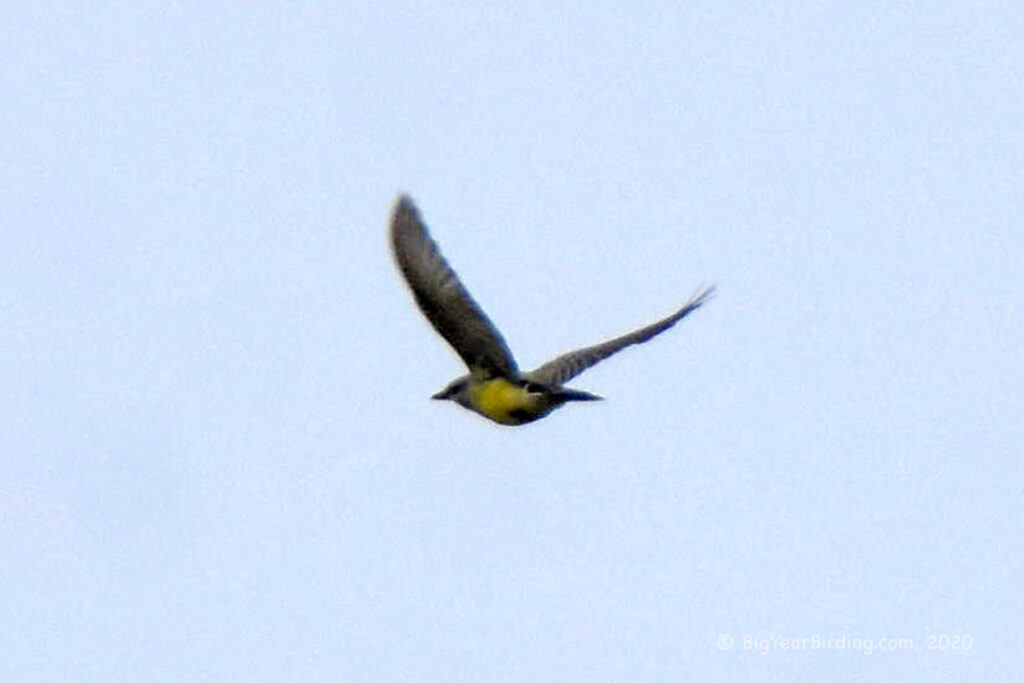
The Western Kingbird is a medium-sized passerine bird that can be found throughout western North America. It measures about 8-10 inches in length and weighs between 1.2 and 1.6 ounces. The bird has a distinctive black tail with a white outer tail feather, a gray head, and a yellow belly. Its wings are also black, and it has a white throat patch that is visible when it is perched.

One of the most distinguishing field marks of the Western Kingbird is its behavior. It is known for perching on exposed branches or wires, where it will sit and watch for insects. When it spots prey, it will fly out and catch it in mid-air before returning to its perch. This behavior sets it apart from other flycatcher species, which tend to catch insects from a stationary position.
The Western Kingbird is a migratory species, spending its breeding season in western North America and migrating to Mexico and Central America for the winter. It is one of the first migratory species to return to its breeding grounds in the spring, with males arriving before females. They breed in open habitats such as prairies, savannas, and agricultural fields.
During the breeding season, Western Kingbirds are known for their aggressive defense of their nests. They will attack larger birds, such as crows and hawks, that come too close to their territory. They also use their sharp beaks to remove the tails of potential predators, such as snakes, to prevent them from entering their nests.

The Western Kingbird is an important species in its ecosystem, controlling insect populations and providing food for predators. Its migration patterns and habitat requirements make it vulnerable to habitat loss, and conservation efforts are necessary to ensure its long-term survival.

